Shipping container homes have gained popularity as an affordable and sustainable housing solution. Their durability and adaptability have made them a compelling choice for residential construction. The life expectancy of these homes is a common question among potential homeowners, and for good reason. When properly constructed and maintained, shipping container homes display remarkable durability, often lasting upwards of 25 years or more. Factors such as the quality of the container, modifications made, and maintenance schedule contribute significantly to their longevity.
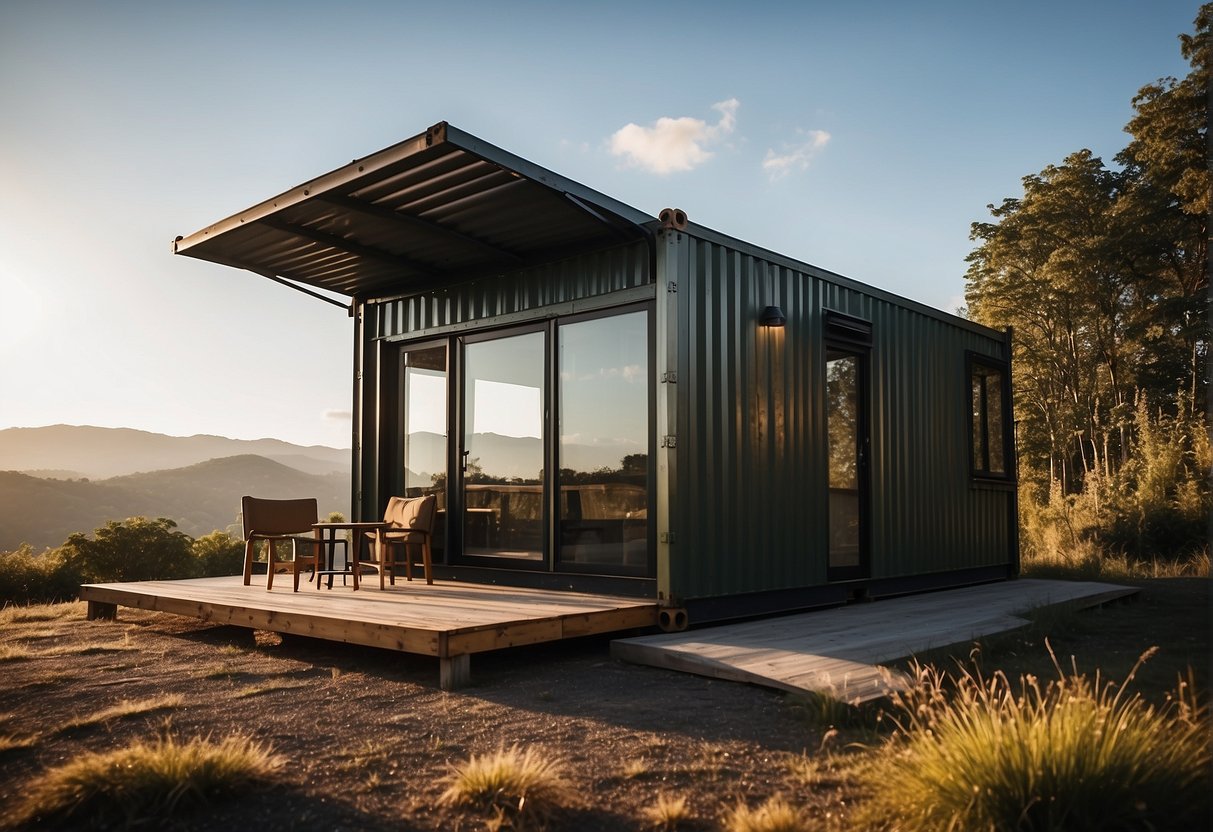
The build quality of the initial container is a fundamental factor in determining the lifespan of a container home. Containers designed for shipping goods are engineered to withstand harsh conditions over many years, which translates well when they are repurposed into living spaces. However, the threat of rust is the main concern associated with these steel structures, and it directly affects their stability. Regular maintenance is therefore essential to prevent corrosion and ensure the structural integrity of the home for years to come.
Shipping container homes are not only a question of durability but also a reflection of sustainable living practices. With the right precautions and care, such as the application of proper protective coatings and regular inspections, container homes can serve as long-lasting, durable structures. The lifespan of these unique homes can be significantly extended through meticulous maintenance, ensuring that they provide safe, stable, and comfortable living spaces well into the future.
Fundamentals of Container Homes
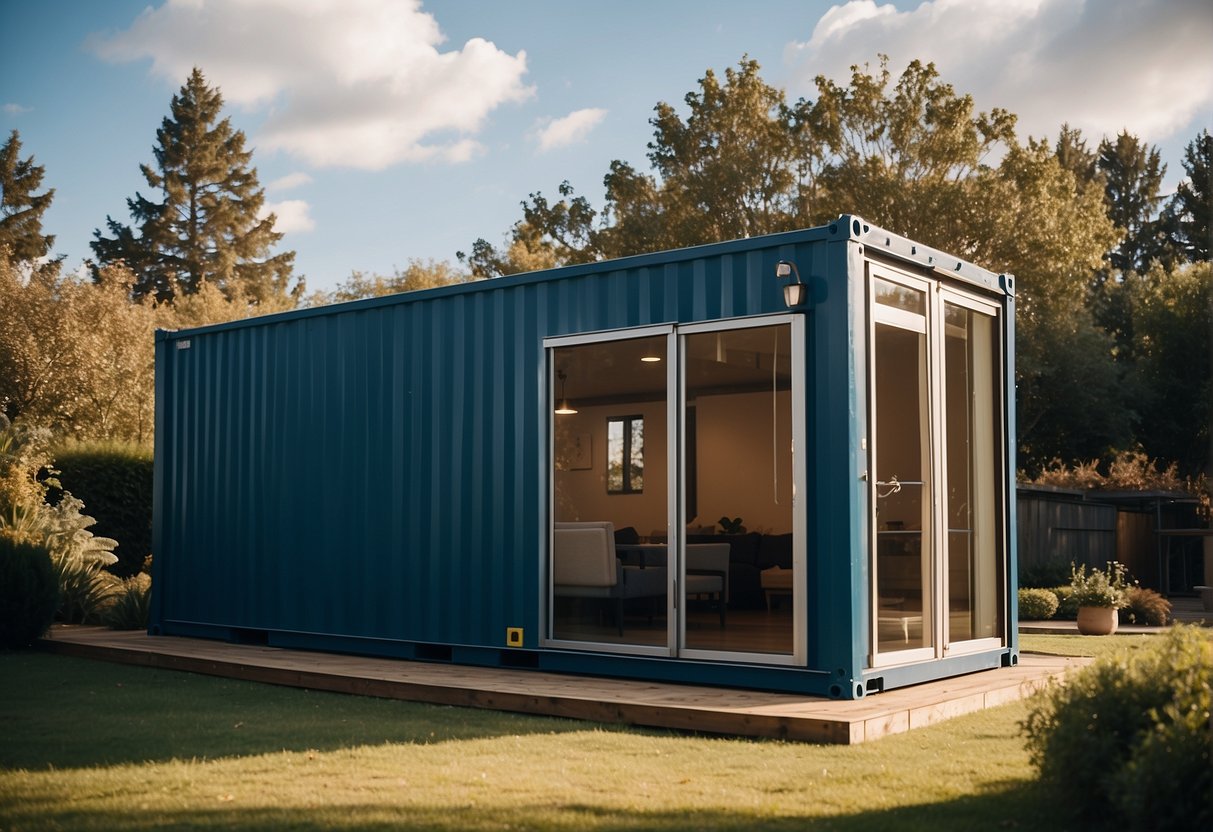
Container homes utilize the robust design of shipping containers to provide an innovative housing solution. Emphasizing strength and sustainability, these structures harness the innate qualities of containers to create durable and unique living spaces.
Design and Structure
The design of container homes is characterized by the modular nature of shipping containers. These steel boxes are engineered for stacking during transport, which in construction, translates into a system that can be easily configured and customized. The end frames and corrugated sides of containers are not only distinctive aesthetically but provide exceptional structural integrity. Container homes often retain the original cargo doors, adding to their functionality and industrial charm.
Materials and Durability
The primary material in container homes is Cor-Ten steel, known for its weathering properties that guard against corrosion. Containers also feature sturdy steel rails, which support the unit during handling and contribute to the overall durability when repurposed as homes. The materials used in shipping containers are selected for their ability to withstand harsh environmental conditions, which makes them suitable for long-term residential use. They are designed to last, with maintenance and proper modifications, for 25 years or more, according to Container Home Hub.
By harnessing the inherent strengths of steel and thoughtful design, container homes offer a compelling combination of durability, adaptability, and style.
Lifespan Determinants
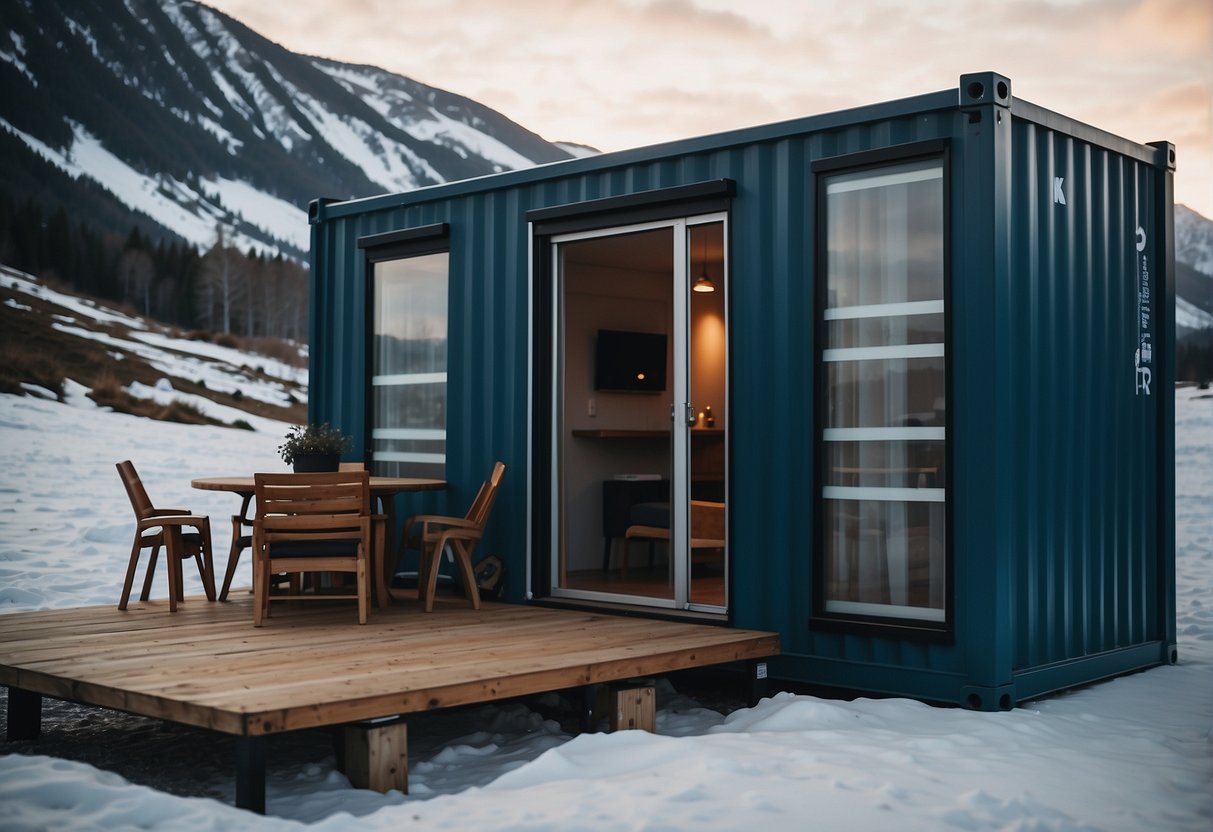
The durability of shipping container homes is shaped by various factors, including exposure to the elements and how they are maintained. Understanding these factors is crucial for maximizing the lifespan of these innovative living spaces.
Impact of Environmental Factors
Shipping container homes are subject to the influence of weather conditions and the environment in which they are located. Regions with extreme climates—for example, high humidity, salty sea air, or heavy industrial pollution—can accelerate wear and tear on the containers’ structural integrity. Proper protection from harsh weather, such as positioning the home to avoid prevailing winds or creating barrier landscaping, can mitigate these effects.
Corrosion and Maintenance
The main adversary of a shipping container’s longevity is corrosion. Rust can compromise the container’s exterior and its overall stability. Managing rust involves routine maintenance such as regular cleaning, paint applications, and sealing to extend the life of a container home. Containers require periodic inspections to detect and rectify any rust spots, which if left untreated, could lead to substantial deterioration.
Modifications and Enhancements
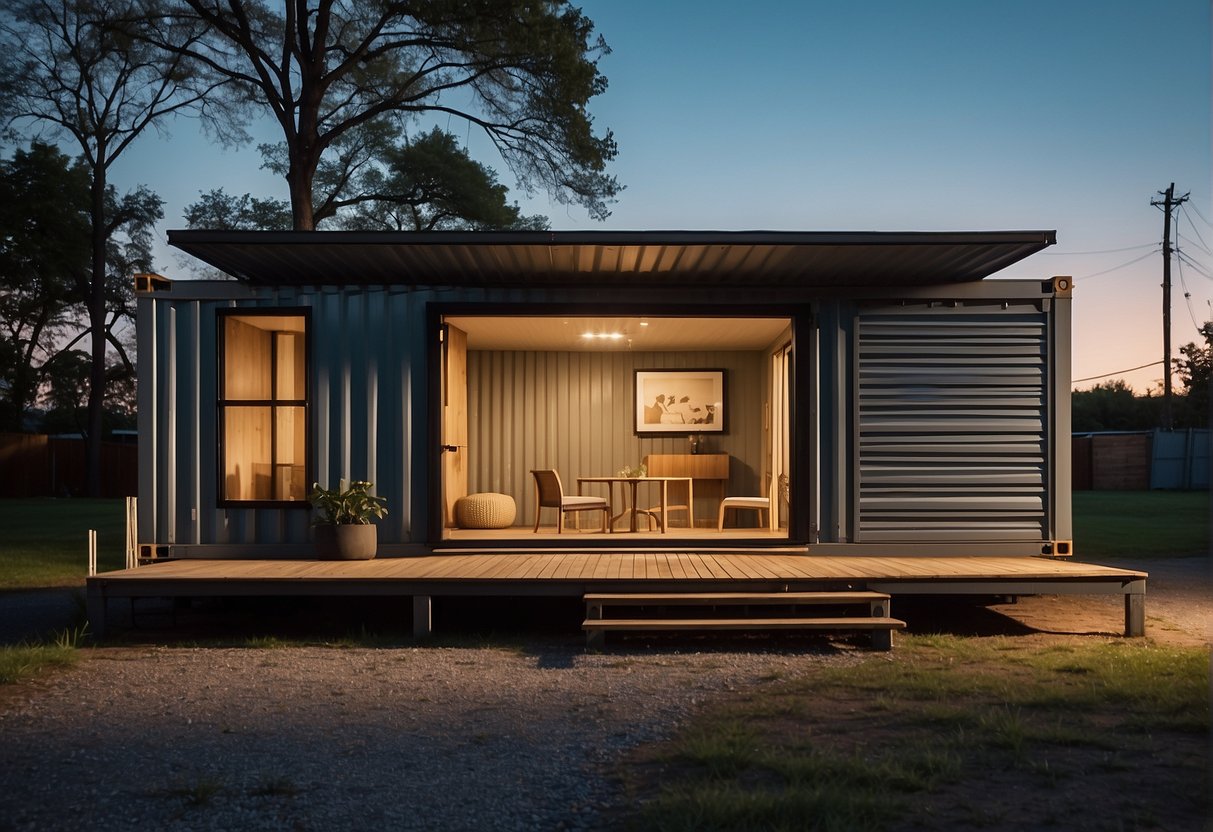
When enhancing shipping container homes, two critical aspects include ensuring stable interior climates and incorporating design features for both utility and visual appeal. Strategic modifications play a pivotal role in extending container longevity and livability.
Insulation and Temperature Control
To combat temperature extremes, insulation is vital in shipping container homes. Properly insulated containers help prevent condensation and manage moisture, thereby reducing corrosion and maintaining the interior climate. Common insulation materials include spray foam, rigid panels, and blanket insulation, which need to be chosen based on the climate they’ll contend with. For instance, spray foam insulation provides an airtight seal, reducing the chance of rust from moisture.
Aesthetic and Functional Additions
Beyond the structural aspects, aesthetic modifications like painting, adding windows, doors, and cladding can transform containers from their industrial origins into personalized homes. Employing a container modification service ensures professional quality in adding reinforcements where cuts are made for windows or doors. For instance, welding additional steel to the framework maintains integrity when adjusting the container’s structure. Moreover, installing a new roof not only prevents water pooling but can also enhance the appearance and insulation of the home. These enhancements contribute to both the functionality and the longevity of the container home.
Practical Aspects of Ownership
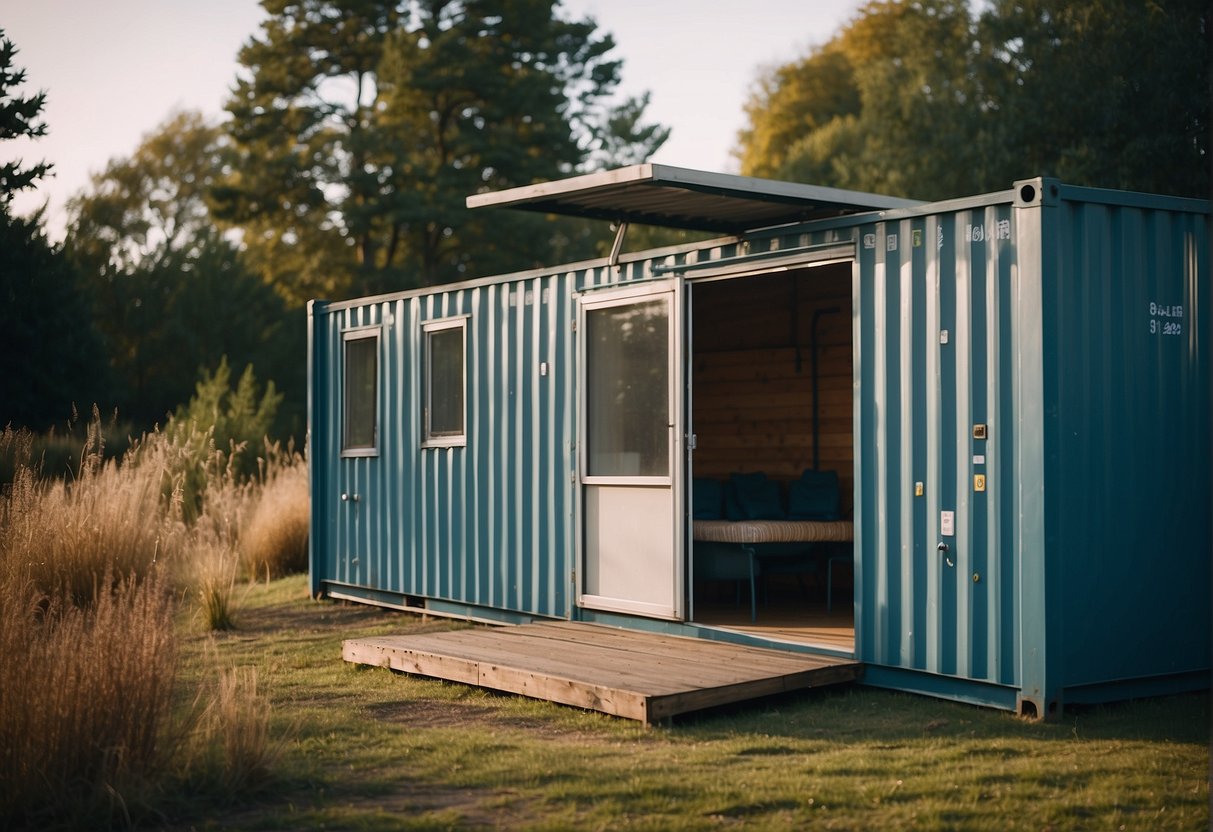
When considering the practical aspects of ownership for shipping container homes, it’s important to evaluate both the initial investment and the ongoing costs related to maintenance and repairs. These homes are lauded for their cost-effectiveness and durability, but they require proper upkeep to maintain their structural integrity over time.
Cost Analysis
The initial cost of a shipping container home is often less compared to that of a traditional home. It is generally perceived as a cost-effective investment due to the lower expenditure on materials and construction. However, one should account for the full financial picture, including land costs, delivery fees, and modifications. A thorough cost analysis encompasses:
- Acquisition of containers: Often ranging between $1,500 – $3,000 per unit.
- Modifications and insulation: Essential for habitability, these can add further costs.
- Interior and exterior finishing: Costs vary depending on the choice of materials.
Longevity and Repairs
The lifespan of shipping container homes can extend up to 25 to 30 years without significant maintenance; however, with diligent upkeep, this period could stretch up to 50 years or more. Durability against heavy loads and extreme weather conditions is a hallmark of container homes, yet they are not immune to cracks and structural issues. Key points regarding longevity and repairs include:
- Regular Maintenance: Routine checks and repairs will guard against deterioration, ensuring the house maintains its resale value.
- Potential for Structural Issues: Vigilance is needed to detect and repair any signs of wear or structural compromise to preempt more serious damage.
- Upkeep Costs: While maintenance is less frequent, it may be complex due to the unique nature of these homes, sometimes leading to higher costs when repairs are needed.
Building Standards and Regulations
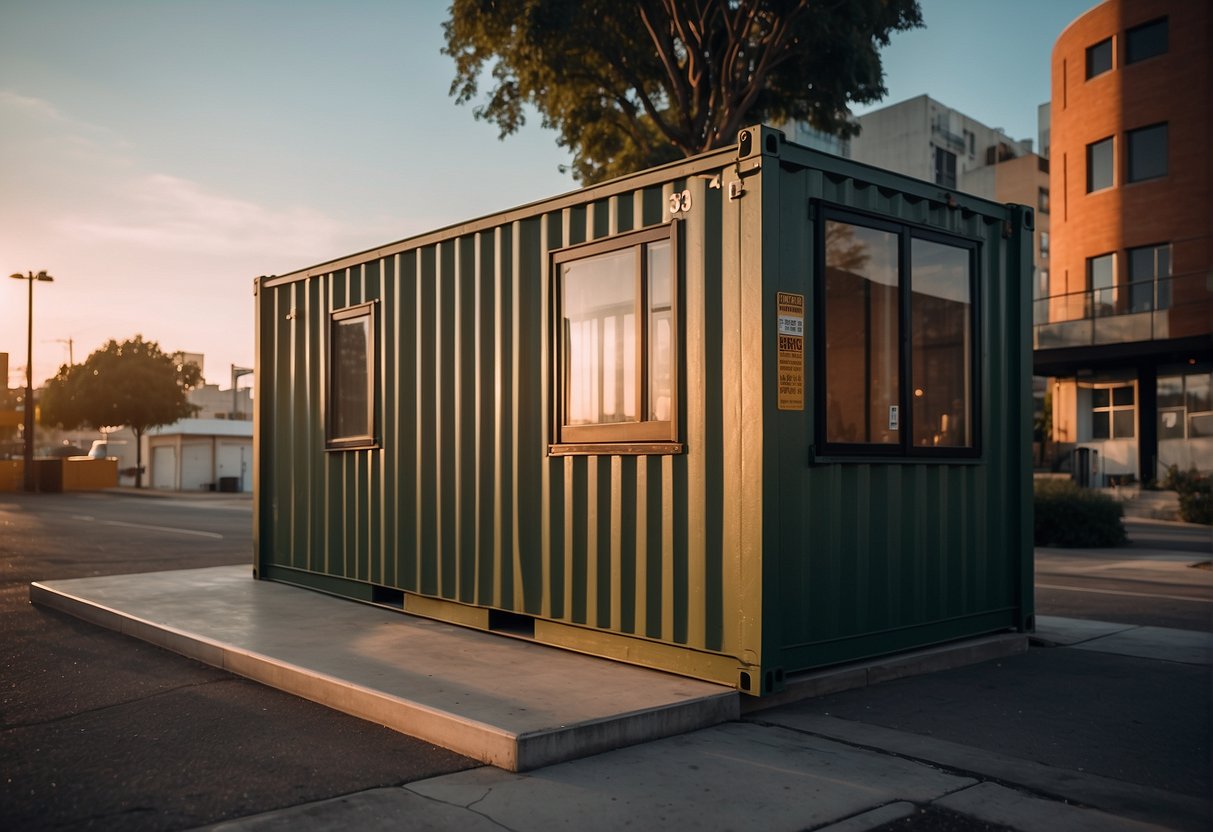
Building a shipping container home necessitates adherence to strict guidelines to ensure its structural integrity and safety. These regulations are essential for fostering sustainable housing options that are also environmentally friendly.
Compliance with ISO Standards
Shipping container homes must comply with International Organization for Standardization (ISO) standards, which define the specifications for these structures to be used safely for residential purposes. ISO certifications confirm that a container has been built to withstand the rigours of shipping and thus is structurally sound for conversion into a dwelling.
Containers suitable for building are commonly of a type that has been fabricated and tested to meet ISO specifications in terms of dimensions and strength. When employing a container for construction, it is imperative to maintain its integrity. Modifications such as cutting for windows or doors must be performed carefully, frequently involving additional reinforcement to compensate for the alterations. These modifications should be undertaken without compromising the unit’s original strength and resistance to environmental stresses.
Materials like sandpaper might be used for surface preparation when modifying containers, ensuring that surfaces are properly abraded for painting or sealing. One should be cautious to avoid exposure to toxic chemicals that could be present in paint or the original container flooring, as some containers carry hazardous cargo. These chemicals not only pose a health risk but can also affect the long-term durability of the home if they necessitate the replacement of large sections of the container.
Adherence to ISO standards also supports the ethos of sustainable and environmentally-friendly building practices. It ensures that shipping container homes are not only innovative but also safe and durable. This compliance is a cornerstone in advocating for container homes as a legitimate and sustainable housing option, giving consumers and regulatory bodies the confidence that these structures are indeed fit for habitation.
Pros and Cons of Container Homes
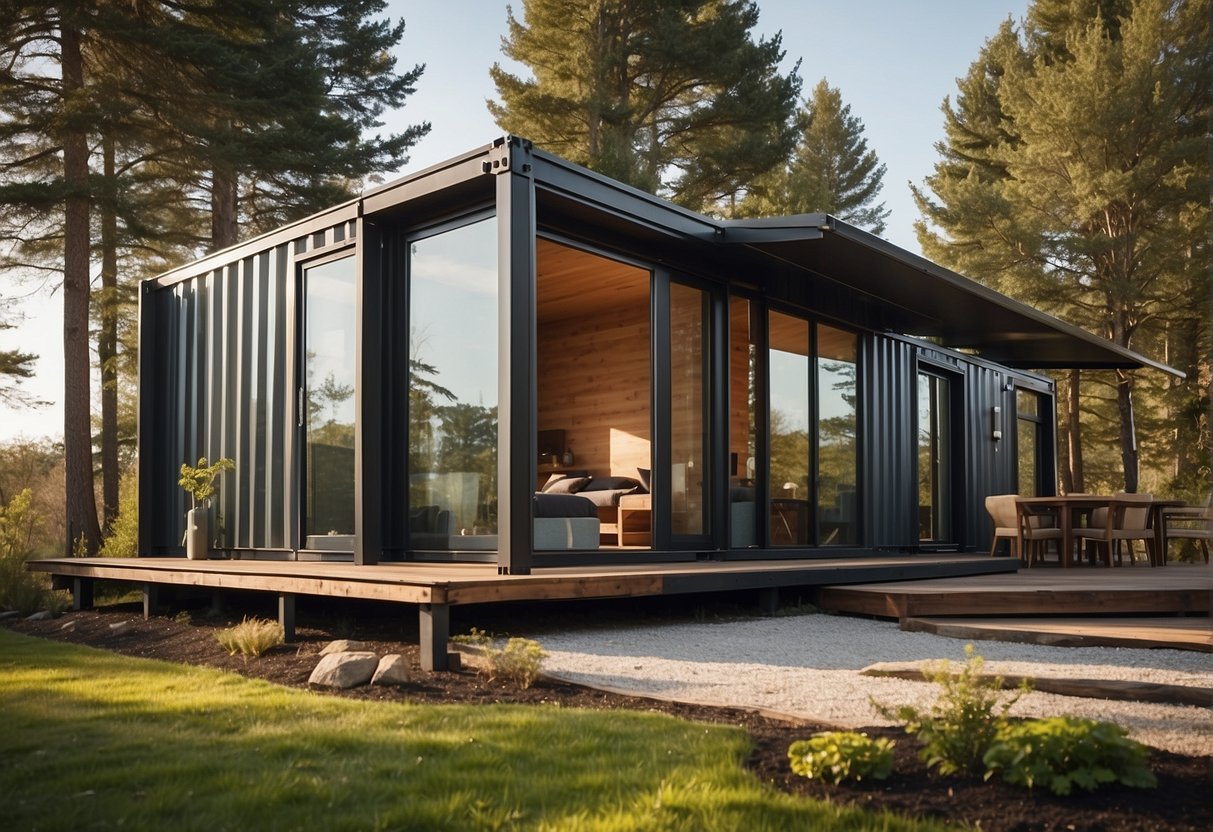
When considering shipping container homes as a living space, it’s important to weigh the advantages against the potential challenges they present. These homes offer innovative solutions to some housing issues but also come with their own unique set of considerations.
Advantages of Container Homes
- Cost-Effective: Shipping container homes can be a more affordable option compared to traditional housing. The initial purchasing cost of the containers themselves is often less than the materials for a standard home.
- Sustainable Housing Option: These homes are seen as a sustainable choice, utilizing repurposed shipping containers and reducing the need for new construction materials.
- Stability and Durability: Containers are designed to withstand heavy loads and harsh conditions, contributing to the stability of the structure in various climates.
- Environmentally Friendly: By repurposing steel containers, these homes minimize the carbon footprint, positioning them as an environmentally-friendly housing alternative.
Challenges and Considerations
- Insulation and Temperature Control: Adequate insulation is essential to maintain a comfortable temperature. In extreme weather conditions, untreated containers may not offer sufficient protection from heat or cold.
- Building Grades and Regulations: Complying with local building codes can be tricky. Ensuring the container meets the required grades for housing is key to successful projects.
- Pest Control: While shipping containers are less susceptible to pests than some traditional homes, areas cut for windows or doors can become entry points if not properly sealed.
- Longevity Concerns: While container homes can be very durable, factors such as the quality of the container and maintenance have a significant impact on their lifespan.
